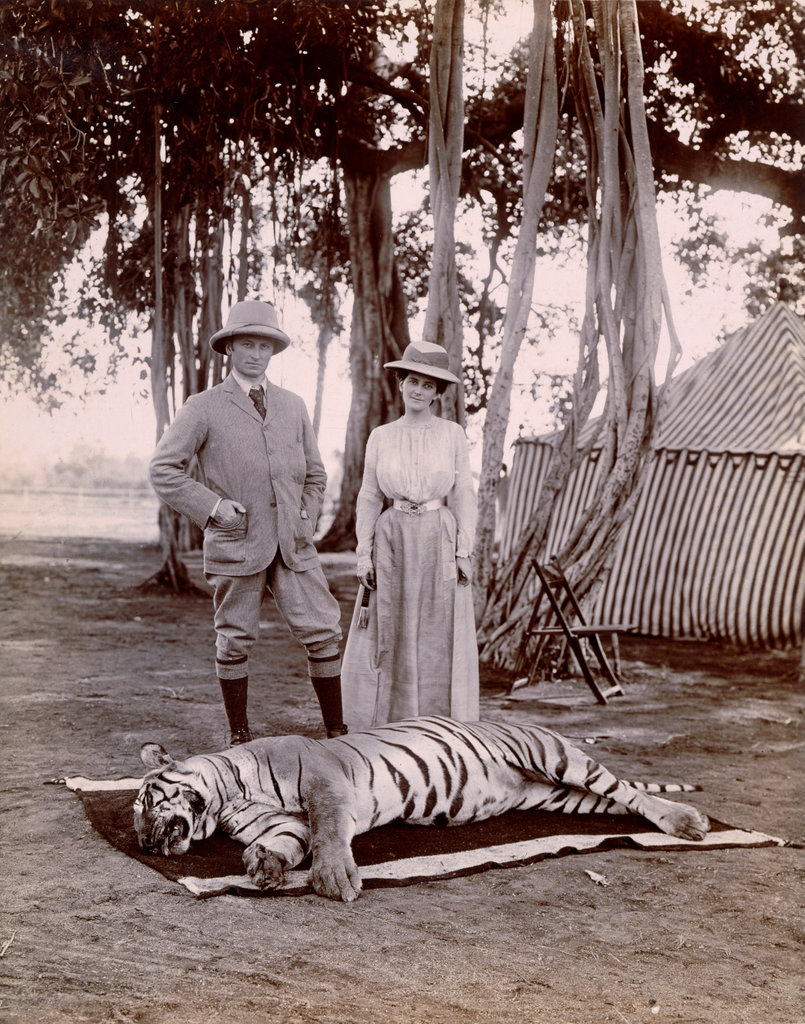Today is International Tiger Day which is celebrated every year to raise awareness for tiger conservation.There was a large population of tigers in Gujarat up to middle age but there is no tiger in Gujarat now. It is amazing fact that there were tigers near Ahmedabad in old time. 

Tiger hunting was a favourite entertainment game for Indian rulers since ancient time. It was a favourite sport for Sultans of Gujarat in middle age. Halol & Mahemdavad were important hunting places for Gujarat Sultans. Hunting hobby of Indian rulers decreased tiger population.
Tiger hunting was favourite sport & pastime of royals & elites in 19 & early 20th century. It was main tourist attraction of India for Europeans. In British rule,tiger hunting parties were arranged by rulers of princely states in honour of visiting British dignities & officials.
In 1472 AD after murder of Kutch Jadeja ruler Hamirji his sons Khengarji & Sahebji went Ahmedabad to their brother Aliyoji & sister Kamabai queen of Sultan. Gujarat Sultan Mahmud Begada impressed of his brother-in-law Kutch prince Khengarji bravery in tiger hunting & honoured him
Vagher word is derived from word Vagh means tiger. It was so named because of Vagher community's bravery & their cruelty towards their enemy. Vaghers are professionally linked with the sea.They were good sailors,navigators,fishermen & pirates.Later they became soldiers & farmers.
163 years old drawing of a #British officer travelling through the forest in Palakhi in #India & a tiger attacks them was published in a London magazine in 1858 AD. 

146 years old photo of His Royal Highness Prince of Wales George Frederick Ernest Albert (later King George V ) on the elephant in #tiger hunting party in Terai #Himalaya was taken in 1875 AD. 

146 years old photo of His Royal Highness Prince of Wales George Frederick Ernest Albert (later King George V ) with the body of a hunted #tiger in Terai #Himalaya was taken in 1875 AD. 

146 years old photo of a camp tent where the skin of dead #tiger bodies was peeled during tiger hunting party of His Royal Highness Prince of Wales George Frederick Ernest Albert (later King George V ) was taken in 1875 AD. 

119 years old photo of the Viceroy of India Lord George Curzon & his wife Lady Mary Curzon with dead body of #tiger he hunted. Photo was taken in 1902.
#InternationalTigerDay
#InternationalTigerDay

• • •
Missing some Tweet in this thread? You can try to
force a refresh











